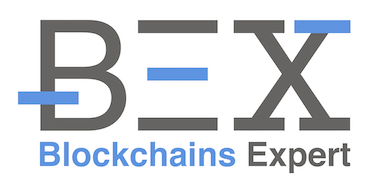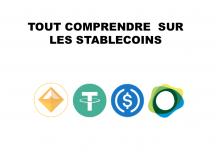Bittensor : TAO Crypto, l’avenir de l’IA décentralisée et prometteuse
```html
Les dernières nouvelles sur Bittensor
Bittensor est un réseau décentralisé qui fait des vagues sur la...
Bittensor : L’Ascension Promise du TAO Crypto dans l’IA Décentralisée
## Les dernières nouvelles sur Bittensor
Bittensor, une plateforme en pleine expansion dans le domaine de...
Bittensor et TAO Crypto : Révolutionner l’IA grâce à la Décentralisation
```html
Les dernières nouvelles sur Bittensor
Dans le monde en constante évolution des cryptomonnaies, TAO Crypto se...
Investir dans TAO Crypto : Découvrez les opportunités offertes par Bittensor
# Investir dans TAO Crypto : Un regard approfondi sur Bittensor
Le monde des cryptomonnaies et...
Investir dans TAO Crypto : Une Opportunité dans l’IA Décentralisée ?
# L’investissement dans TAO Crypto : Est-ce intéressant ?
## Les dernières nouvelles sur Bittensor
Bittensor est...
Layer 2 crypto:
Si vous suivez l’actualité et le monde des crypto-monnaies, difficile de passer à...
Bridge Crypto
L’écosystème crypto est vaste. Des dizaines de blockchains et de protocoles existent. Par...
Tether dans le viseur de l’ONU!
Dans ma dernière vidéo, j'aborde plusieurs sujets clés dans le monde de la...
Crypto payments for business
In the contemporary financial landscape, the emergence of cryptocurrencies represents a revolution comparable...
Paiement en Cryptomonnaie
Dans le paysage financier contemporain, l'émergence des crypto-monnaies représente une révolution comparable à...
Blackrock Asset Management
Le début du FOMO des investisseurs institutionnels
https://youtu.be/qYU3ZZXP84A
Bank of International Settlement: son rôle dans le prochain système monétaire
https://youtu.be/KfpXxb572NI
Répercussions et révélations concernant Binance
Aave : le pionnier de la DeFi
Aave est un pionnier et une véritable référence en matière de protocole de...
Les assurances décentralisées au service de la DeFI
Le monde des crypto-monnaies est en plein développement et génère des milliards de...
Quel Stablecoin choisir?
Qu'est-ce qu'un stablecoin?
Si vous vous intéressez au monde des...
Déclaration Cryptos: Comment déclarer ses cryptos au FISC ?
Le printemps est là et avec lui l’échéance de la déclaration d’impôts. Chaque...
Ripple SEC : où en est la procédure?
Au cœur de l’actualité, le procès entre Ripple et la SEC n’en finit...
Le phénomène des DAO
Si vous vous baladez dans l’écosystème blockchain, vous savez qu’il s’agit d’un secteur...
Les cryptos financent-elles les activités criminelles ?
Au cœur des arguments des opposants aux crypto-monnaies, leur rôle dans le financement...
Les CBDC, évolution ou révolution ?
Les CBDC (Central Bank Digital Currencies) ou MNBC (Monnaies Numériques de Banque Centrale)...
La réglementation Européenne MiCA
Face au développement exponentiel et à l’adoption croissante des crypto-monnaies, les différents états...
Le départ d’Andre Cronje de la DeFi et ses conséquences
Une nouvelle a récemment agité l’écosystème crypto et provoqué de nombreux remous au...
Cosmos : l’Internet des Blockchains
Cosmos est une des blockchains stars de l’année 2021. C’est un projet innovant...
Curve Finance : Le prince de la finance décentralisée
Curve Finance est un protocole de liquidité pour Ethereum, parmi les plus populaires.
Analyse crypto et point sur le marché
Pour ce point sur le marché des cryptos du mois d’octobre, nous verrons...
Compound Finance – Comment prêter et emprunter sans banque ?
Compound Finance est une plateforme sur laquelle les utilisateurs peuvent déposer leurs crypto-actifs...
Polkadot – attention, énorme potentiel !
Polkadot est un projet absolument central dans l’univers des cryptomonnaies qui jouera un...
Ripple – Pourquoi le cours pourrait exploser en septembre?
Ripple est souvent catégorisée comme la crypto des...
Uniswap, Balancer – Tout savoir avant d’utiliser ces Automated Market Makers
Dans cet article, nous allons voir le phénomène des échanges décentralisés. aussi...
Conditions générales de vente (Blockchains-Expert)
Article 1 : Champ d’application
Les présentes conditions générales de...
Prix du Bitcoin – jusqu’où peut-il aller?
Dans cet article, je vais vous exposer une des théories les plus intéressantes...
Tezos – comment gagner de l’argent avec vos XTZ ?
Tezos est une plateforme de smart contrat très prometteuse, qui a connu une réelle...
Crypto Fear & Greed Index – analyser l’état émotionnel des crypto-investisseurs
Le Crypto Fear & Greed Index est un indicateur intéressant parce qu’il cumule...
BAKKT – tout pour comprendre cette plateforme
BAKKT est une plateforme vraiment intéressante dans la mesure où elle va sans...
Comment le prix du bitcoin est-il manipulé ?
Dans cet article, je voudrais vous expliquer brièvement comment le prix du bitcoin...
Faut-il investir dans Chainlink ?
Chainlink est un projet que j'aime beaucoup et que je suis depuis longtemps....
Net Unrealized Profit/Loss
Le Net Unrealized Profit/Loss (NPUL) est un indicateur imaginé par Glassnode. Il s’agit...
Tout comprendre sur le « Halving » du bitcoin
https://youtu.be/C-v-Yq0v25Y
Le "Halving" est vraiment un des points...
Stablecoin Supply Ratio – l’indicateurs qui mesure l’impact des stablecoins sur le bitcoin
Le Stablecoin Supply Ratio est un indicateur ON-CHAIN vraiment intéressant. Il permet en effet de comparer le nombre...
Nexo – tout sur la banque 2.0
Nexo est une plateforme de Finance Décentralisée qui permet d'emprunter de l'argent...
Stablecoins – une explication simple
Les Stablecoins ont fait une entrée fracassante dans l'univers des cryptos en 2018 et ne...
Capitalisation Réalisée – une mesure plus précise que la Market Cap
La Capitalisation Réalisée qui vient de l'anglais "Realized Cap", est une unité de mesure de...
Est-ce que le prix du bitcoin va continuer à augmenter?
Dans cet article , j’aimerais vous expliquer pourquoi (selon moi) le prix du bitcoin et des...
Coinmarketcap btc – tous les secrets de cette plateforme incontournable
https://www.youtube.com/watch?v=LN-qWOzlitk
CoinMarketCap est généralement conu pour toutes les...
Kraken Avis – tout savoir avant de l’utiliser [2020]
The Platform
La popularité des crypto-monnaies est en pleine croissance...
BITCOIN NETWORK MOMENTUM [Bitcoin trading]
Créé par Philip Swift en 2018, le BNM compare le volume de
transactions réalisées...
Kraken review: all you need to know [updated 2020]
The Platform
The popularity of cryptocurrencies has been on the...
Ledger Nano S review – The Safe of the futur [2020]
It's not a week without us hearing about a bitcoin exchange or users...
5 Industries Ready To Start Using Blockchain
By now most recognize the term "blockchain" and associate it with bitcoin,...











































![Kraken Avis – tout savoir avant de l’utiliser [2020]](https://www.blockchains-expert.com/wp-content/uploads/2020/01/kraken-review-2019-4-780x405-218x150.png)
![BITCOIN NETWORK MOMENTUM [Bitcoin trading]](https://www.blockchains-expert.com/wp-content/uploads/2020/01/Bitcoin-Virtual-Currency-218x150.jpg)

![Ledger Nano S review – The Safe of the futur [2020] Ledger Nano S avis](https://www.blockchains-expert.com/wp-content/uploads/2019/10/Ledger-218x150.jpg)










